Bankersadda is India’s Leading and most trusted website for Banking Jobs. The portal has complete information about all Banking and Insurance Jobs, its latest notifications, from all state and national level jobs, and updates. These exams and jobs are regularly updated as per the official information available. Check the latest Banking Jobs here..
Latest Articles
- Bank of India Apprentice Apply Online 2025 Starts bankofindia.co.in for 400 Posts
- Important Days in January 2026, National and International Days
- Daily Current Affairs Quiz 25 December 2025, Attempt Important GK Questions
- IBPS Clerk Mains Expected Cut Off 2025, Check State Wise Cut Off Marks
- RBI Assistant Salary 2026, Check Salary Structure, Job Profile & Career Growth
- RBI Assistant Cut Off 2026, Check Previous Year Cut Off Marks
- RBI Assistant Notification 2026, Exam Date, Eligibility, Selection Process & Syllabus
- NABARD Grade A Syllabus and Exam Pattern 2026 for Phase 1 & Phase 2 Exam
- IBPS RRB PO Prelims Cut Off 2025 Out, Check Category Wise Cut Off Marks
- IBPS RRB PO Score Card 2025 Out at ibps.in, Check Score & Marks
Banking Job Notification
- RBI Assistant Notification 2026, Exam Date, Eligibility, Selection Process & Syllabus
- PNB LBO Exam Date 2025-26 Out For 750 Posts, Check Exam Schedule Details
- Bank Exams 2026, Check Full List of Upcoming Banking Jobs
- Bank of India Apprentice Recruitment 2025-26 Notification Out For 400 Posts
- IOCL Non Executive Personnel Recruitment 2025 Notification Out, Apply Online Starts for 94 Posts
- Nainital Bank Recruitment 2025 Notification PDF Out for 185 Clerk, PO and SO Posts
- Bank of India Credit Officer Recruitment 2025-26 Notification Out for 514 Posts
- Punjab and Sind Bank 2025 Exam Date Out, 190 Credit & Agriculture Manager Posts & Exam Pattern
- SBI PO 2026 Notification, Exam Date, Selection Process & Exam Pattern
- UIIC Apprentice Recruitment 2025-26 Notification Out for 153 Posts, Apply Online Starts
- DRDO CEPTAM 11 Recruitment 2025 Notification Out for 764 Senior Technical Assistant-B Posts & Technician A
- RBI Lateral Recruitment 2026 Notification Out, Apply Online Starts for 93 Posts
- IBPS RRB Mains Exam Date 2025-26 Out for Officer Scale 1, 2, 3 & Office Assistant
- IBPS Calendar 2026, Check Exam Dates for PO, Clerk, SO and RRB Exams
- SBI Clerk 2026 Notification, Exam Date, Selection Process & Exam Pattern
- Bombay High Court Recruitment 2025 Notification Out for 2351 Posts (Clerk, Peon, Driver, Steno)
- OICL AO Recruitment 2025, 300 Posts, Last Date to Fill the Online Application Form
- Telangana DCCB Exam Date 2025 Out, Selection Process, Exam Pattern for 225 Staff Assistant Posts
Current Affairs
- Daily Current Affairs News: 24th December, 2025 December 24, 2025
- The Hindu Review November 2025, Download Monthly PDF December 24, 2025
- Daily Current Affairs News: 23rd December, 2025 December 23, 2025
- Daily Current Affairs News: 22nd December, 2025 December 22, 2025
- Daily Current Affairs News: 20th December, 2025 December 20, 2025
- Daily Current Affairs News: 19th December, 2025 December 19, 2025
- Daily Current Affairs News: 18th December, 2025 December 18, 2025
- Daily Current Affairs News: 17th December, 2025 December 17, 2025
- Daily Current Affairs News: 16th December, 2025 December 16, 2025
- Daily Current Affairs News: 15th December, 2025 December 15, 2025
- Daily Current Affairs News: 13th December, 2025 December 13, 2025
- Daily Current Affairs News: 10th December, 2025 December 10, 2025
- Daily Current Affairs News: 9th December, 2025 December 9, 2025
- Daily Current Affairs News: 8th December, 2025 December 8, 2025
- Daily Current Affairs News: 6th December, 2025 December 6, 2025
- Daily Current Affairs News: 5th December, 2025 December 5, 2025
- Daily Current Affairs News: 4th December, 2025 December 4, 2025
- Daily Current Affairs News: 1st December, 2025 December 1, 2025
- Daily Current Affairs News: 29th November, 2025 November 29, 2025
- Daily Current Affairs News: 28th November, 2025 November 28, 2025
Banking Exam Quizzes
- Sentence Correction Questions for BOB Office Assistant Exam 2025
- Seating Arrangement Questions for SBI PO Exam
- Data Interpretation Questions for SBI PO Exam
- English Language Quiz For Bank Foundation 2024-10th April
- Quantitative Aptitude Quiz For Bank Mains Exam 2024-09th April 2024
- English Language Quiz For Bank Foundation 2024-09th April
- English Language Quiz For Bank Mains Exam 2024-09th April
- Quantitative Aptitude Quiz For Bank Foundation 2024 -09th April 2024
- Quantitative Aptitude Quiz For Bank Mains Exam 2024-08th April 2024
- English Language Quiz For Bank Foundation 2024-08th April
- Reasoning Quiz For Bank Foundation 2024-08th April
- English Language Quiz For Bank Mains Exam 2024-08th April
- Reasoning Quiz For Bank Mains Exam 2024-08th April
- Quantitative Aptitude Quiz For Bank Foundation 2024 -08th April 2024
- Quantitative Aptitude Quiz For Bank Mains Exam 2024-07th April 2024
- English Language Quiz For Bank Foundation 2024-07th April
Banking Admit Cards
- Telangana DCCB Admit Card 2025 Out at tgcab.bank.in, Download Hall Ticket Link
- EMRS Admit Card 2025 Out for Non-Teaching (Hostel Warden, JSA, Staff Nurse & Lab Attendant), Download Link
- IBPS SO Interview Call Letter 2025 Out at ibps.in, Download Link
- NABARD Grade A Admit Card 2025 Out at nabard.org, Download Call letter Link
- IOB LBO Interview Call Letter 2025 Out at iob.bank.in, Download Link
- CAIIB Admit Card 2025 Out For Nov-Dec Exam, Direct Link To Download
- EMRS Admit Card 2025 Out at nests.tribal.gov.in, Download Hall Ticket Link
- IBPS RRB Clerk Admit Card 2025 Out at ibps.in, Download Office Assistant Prelims Call Letter Link
- Indian Bank SO Admit Card 2025 Out at indianbank.in, Download Call Letter Link
- RBI Grade B Mains Admit Card 2025 Out at opportunities.rbi.org.in, Download Phase 2 Call Letter
- IBPS RRB Clerk PET Call Letter 2025 Out, Download Link
- IBPS Clerk Mains Admit Card 2025 Out at ibps.in, Download Call Letter Link
Cut Off & Result
- IBPS Clerk Mains Expected Cut Off 2025, Check State Wise Cut Off Marks
- RBI Assistant Cut Off 2026, Check Previous Year Cut Off Marks
- IBPS RRB PO Prelims Cut Off 2025 Out, Check Category Wise Cut Off Marks
- LIC AAO Cut Off 2025, Check Expected Cut Off and Previous Year Marks
- SBI Clerk Mains Cut Off 2025, Check Expected Category Wise Cut Off Marks
- NIACL AO Cut Off 2025, Check Prelims Cut Off Marks
- SBI SO Cut Off 2026, Check Previous Year Cut Off Marks
- SBI PO Mains Cut Off 2025 Out, Check Final Category Wise Cut Off Marks
- Punjab & Sind Bank LBO Final Result 2025 Out at punjabandsindbank.co.in, Download PDF
- SBI Clerk Mains Cut Off 2025, Check Category wise Cut Off Marks
- SBI PO Final Result 2025 Out at sbi.bank.in, Download Result PDF
- IBPS RRB PO Result 2025 Out at ibps.in, Download Prelims Result Link
Banking Exam Analysis
- CAIIB Elective Paper Exam Analysis 2025, 21 December All Paper Shift-Wise Exam Review
- NABARD Grade A Exam Analysis 2025, 20 December Shift 1 Difficulty Level
- IBPS RRB Clerk Prelims Exam Analysis 2025 All Shifts Difficulty Level
- CAIIB BRBL Exam Analysis 2025, 14 December All Shifts Exam Review
- IBPS RRB Clerk Exam Analysis 2025, 14 December Shift 1, Difficulty Level
- IBPS RRB Clerk Exam Analysis 2025, 13 December Shift 4, Level and Attempts
- IBPS RRB Clerk Exam Analysis 2025, 13 December, Shift 3, Good Attempts and Questions
- IBPS RRB Clerk Exam Analysis 2025, 13 December Shift 2, Difficulty Level
- IBPS RRB Clerk Exam Analysis 2025, 13 December Shift 1, Difficulty Level
- IBPS RRB Clerk Exam Analysis 2025, Shift 3, 7th December, Good Attempts & Questions Asked
- IBPS RRB Clerk Exam Analysis 2025, Shift 4, 7th December, Questions Asked, Difficulty Level & Good Attempts
- IBPS RRB Clerk Prelims Exam Analysis 2025, Shift 2, 7th December, Difficulty Level & Section-Wise Analysis
- IBPS RRB Clerk Prelims Exam Analysis 2025, Shift 1, 7 December
- RBI Grade B Phase 2 Exam Analysis 2025, 6 December
- IBPS RRB Clerk Exam Analysis 2025, 6 December, Shift 1 Questions Asked
- IBPS Clerk Mains Exam Analysis 2025, 2 December Difficulty Level
Banking Articles
- Bank of India Apprentice Apply Online 2025 Starts bankofindia.co.in for 400 Posts
- Important Days in January 2026, National and International Days
- Daily Current Affairs Quiz 25 December 2025, Attempt Important GK Questions
- IBPS Clerk Mains Expected Cut Off 2025, Check State Wise Cut Off Marks
- RBI Assistant Salary 2026, Check Salary Structure, Job Profile & Career Growth
- RBI Assistant Cut Off 2026, Check Previous Year Cut Off Marks
- RBI Assistant Notification 2026, Exam Date, Eligibility, Selection Process & Syllabus
- IBPS RRB PO Prelims Cut Off 2025 Out, Check Category Wise Cut Off Marks
- IBPS RRB PO Score Card 2025 Out at ibps.in, Check Score & Marks
- RBI Assistant Syllabus and Exam Pattern 2026 for Prelims and Mains Exam
- SBI Clerk Mains Cut Off 2025, Check Expected Category Wise Cut Off Marks
- PNB LBO Exam Date 2025-26 Out For 750 Posts, Check Exam Schedule Details
- Indian Overseas Bank LBO Final Result 2025 Out, Download Shortlisted Candidates PDF
- GA Capsule for IBPS RRB PO Mains 2025, Download PDF
- No Normalisation In SBI Clerk 2025 Mains Exam, Check RTI Reply
- NIACL AO Cut Off 2025, Check Prelims Cut Off Marks
Banking Exam Syllabus & Exam Pattern
- NABARD Grade A Syllabus and Exam Pattern 2026 for Phase 1 & Phase 2 Exam
- RBI Assistant Syllabus and Exam Pattern 2026 for Prelims and Mains Exam
- Bank of India Apprentice Syllabus 2026 and Exam Pattern
- Punjab and Sind Bank LBO Syllabus and Exam Pattern 2026
- SBI Clerk Syllabus 2026 and Exam Pattern For Prelims and Mains Exam
- IBPS RRB Clerk Syllabus 2026 and Exam Pattern For Prelims + Mains Exam
- Bank of India Credit Officer Syllabus 2026 and Exam Pattern
- Bank of Baroda Office Assistant Syllabus and Exam Pattern 2026
- JAIIB Syllabus & Exam Pattern 2026, Download Syllabus PDF
- RBI Grade B Syllabus and Exam Pattern 2026 for Phase I + Phase II Exam
- Nainital Bank Syllabus & Exam Pattern 2026 for PO, Clerk & SO Posts
- SBI PO Syllabus 2026, Check Subject Wise Syllabus and Exam Pattern for Prelims + Mains
- IBPS Clerk Syllabus 2026, Subject Wise Exam Pattern for Prelims + Mains Exam
- Indian Bank SO Syllabus & Exam Pattern 2026 With Subject Wise Topics
- UIIC Assistant Syllabus 2026 and Exam Pattern, Download PDF
- SEBI Grade A Syllabus & Exam Pattern 2025 (Phase 1 & 2) for All Stream
- UPSC Syllabus 2026, IAS Prelims and Mains Syllabus
- Karnataka Bank PO Syllabus and Exam Pattern 2026, Section Wise Topics









